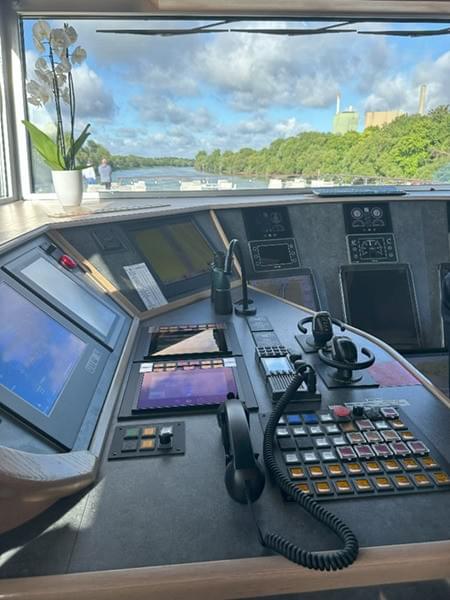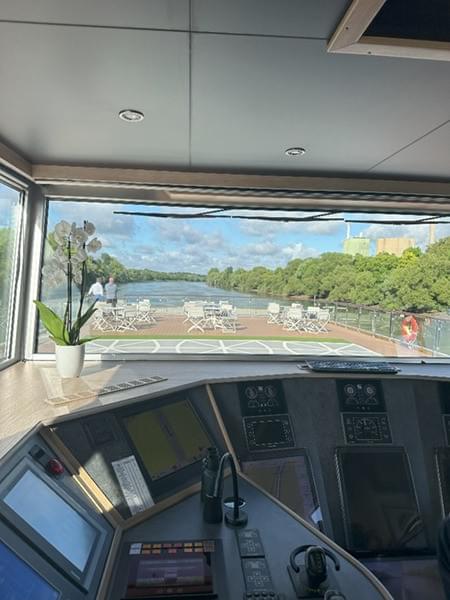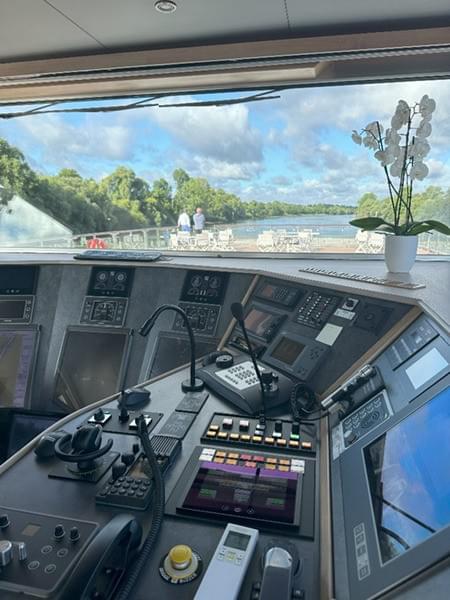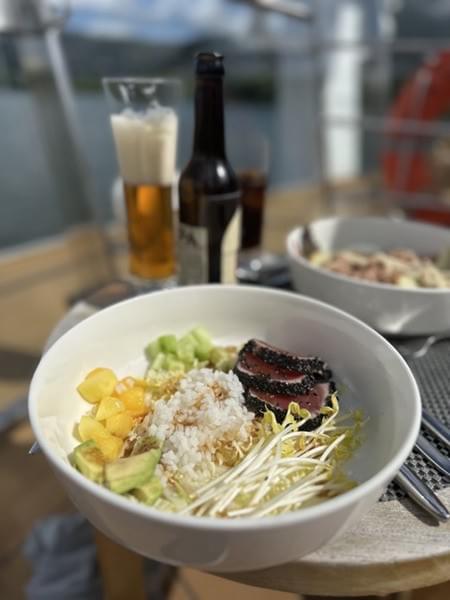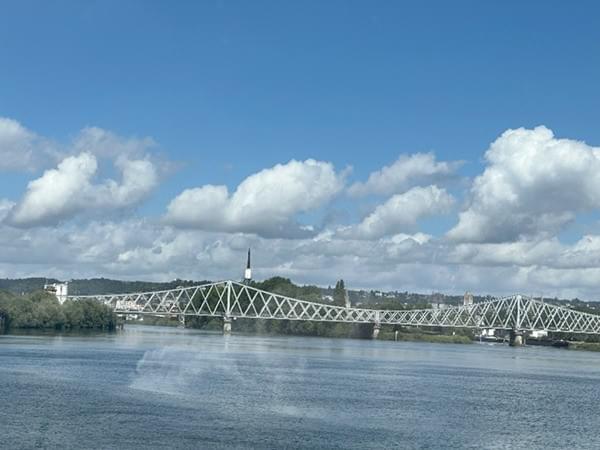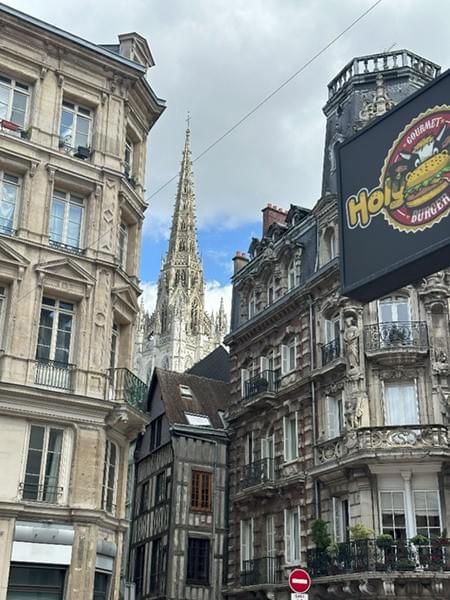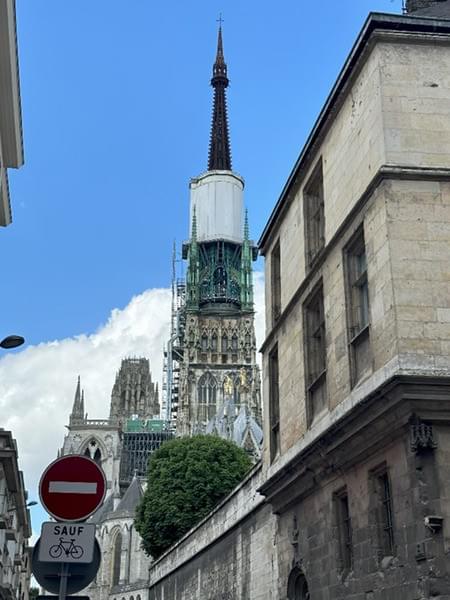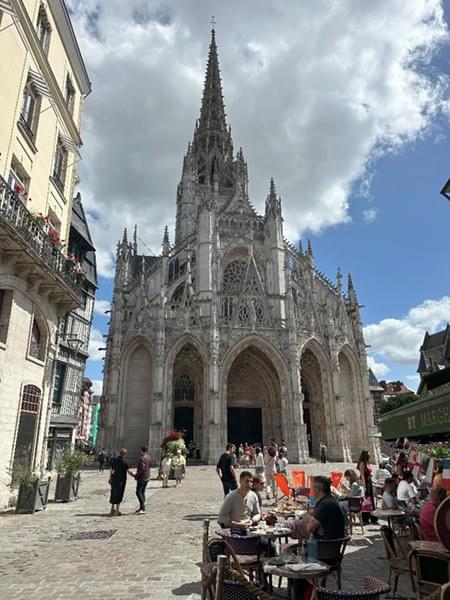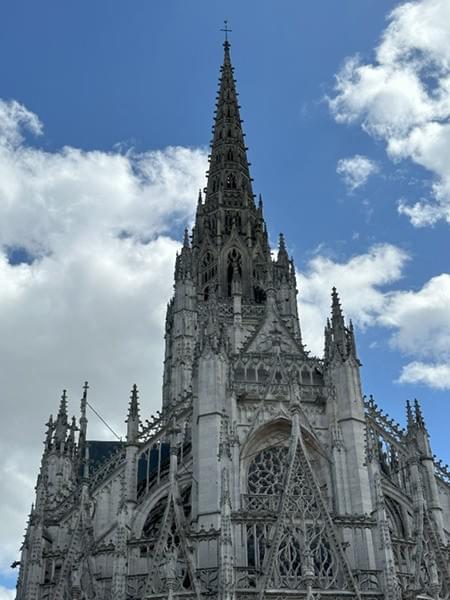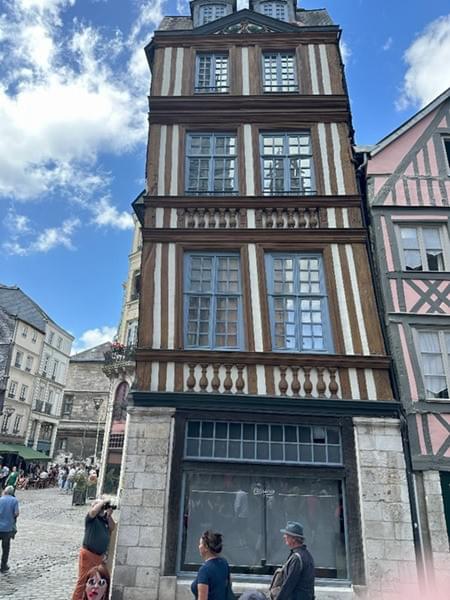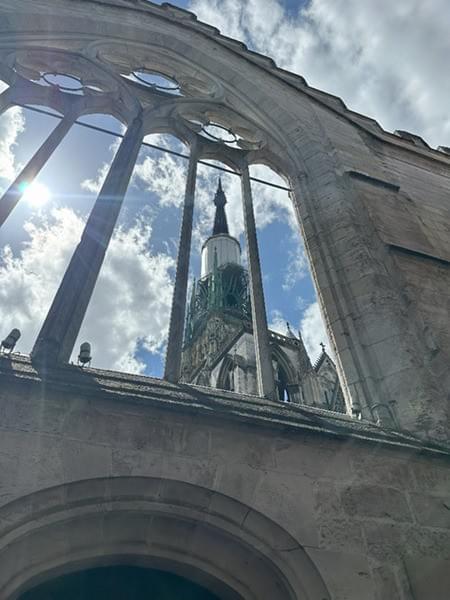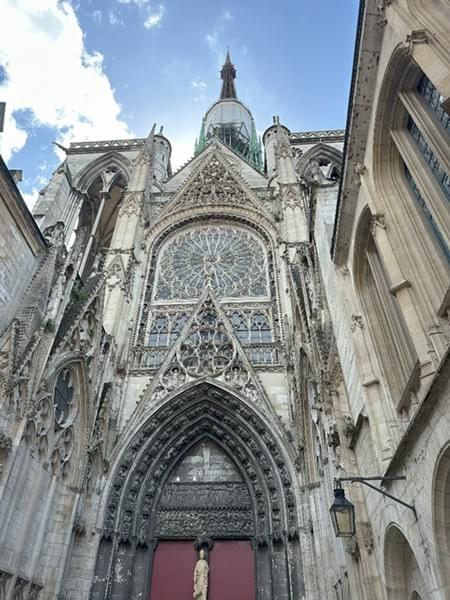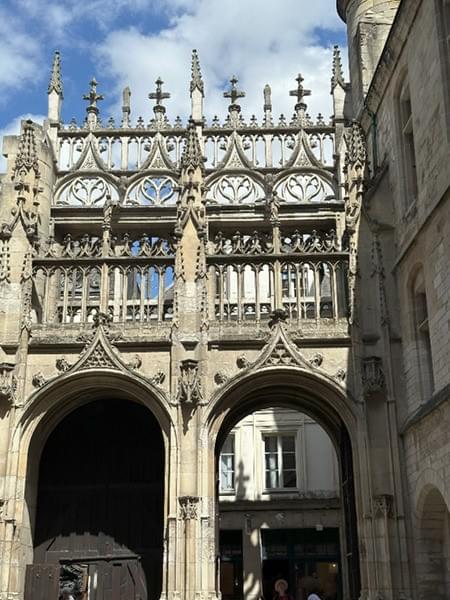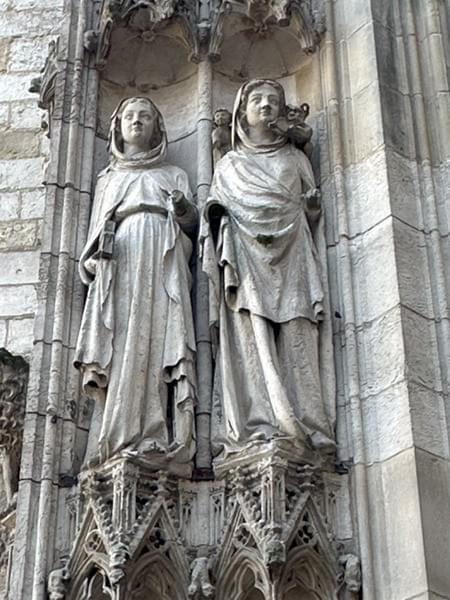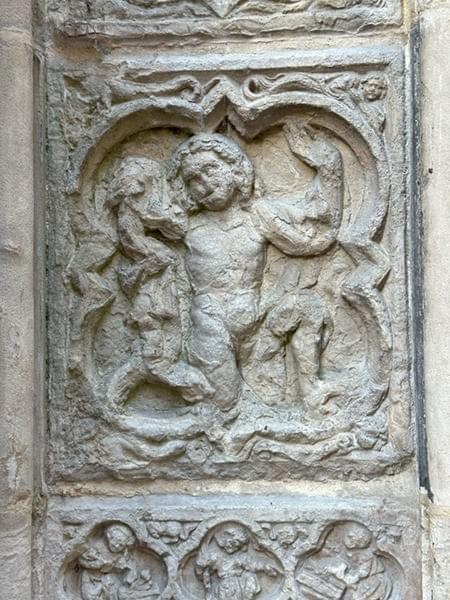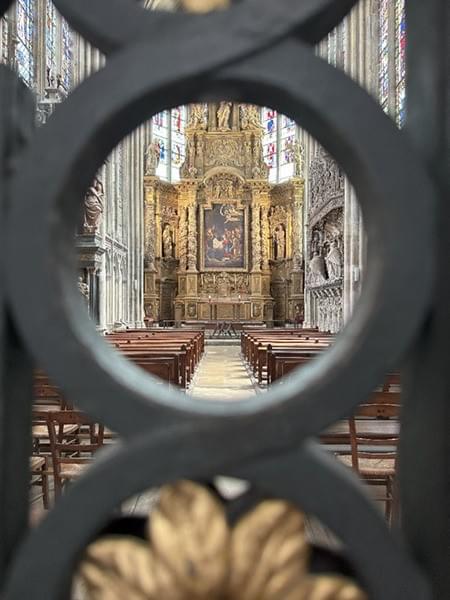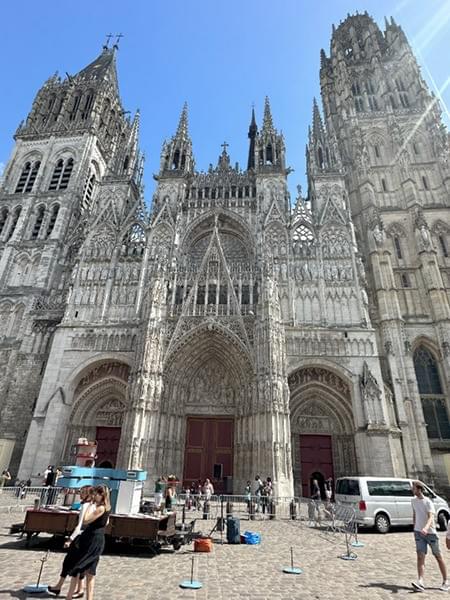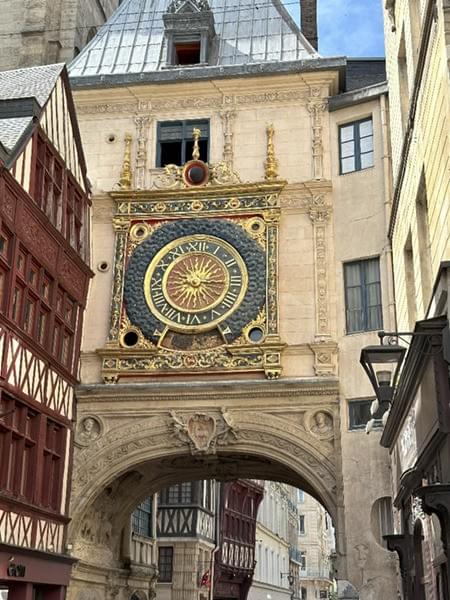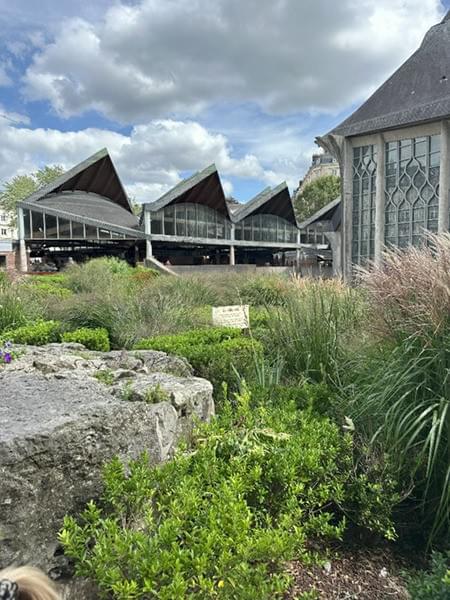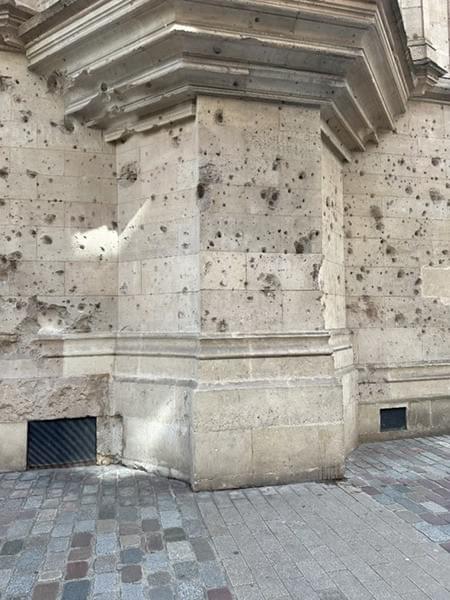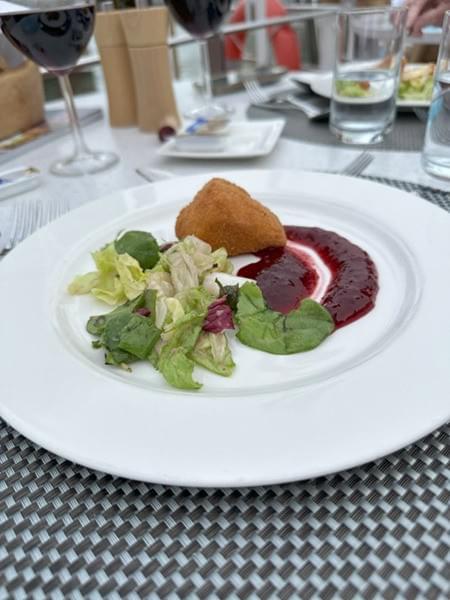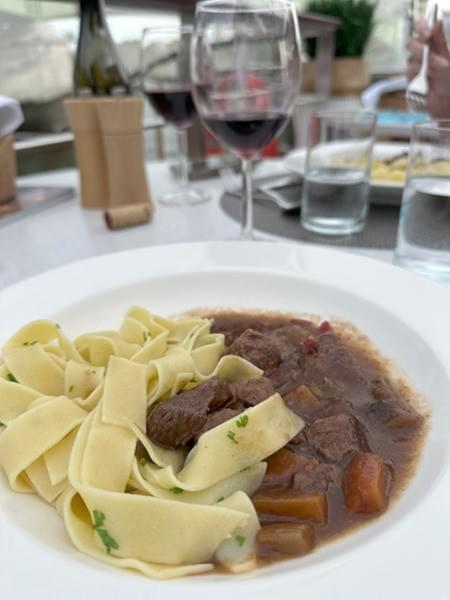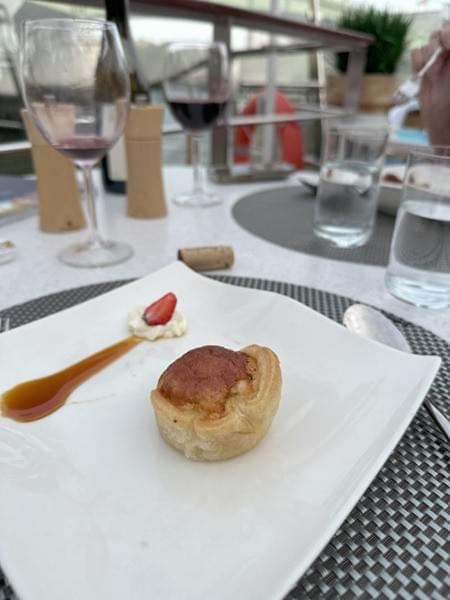Follow our journey on this map.
Day 50 started again with beautiful weather. We sailed before dawn heading to Rouen for a 1PM arrival. That meant we could sleep in!
The captain was hosting a tour of the wheelhouse. It was only for 8 people and was very interesting. The captain went over the operation of the ship ranging from the 8 propellers each of which can rotate 360 degrees using a joystick to how they raise and lower the wheelhouse itself to get under bridges. I’m going to try and get a video of that before we leave.
After a light lunch—which was totally needed—we headed out for a walking tour of Rouen. Rouen is the capital of Normandy and although the city is located about 120 km from the sea, it is home to the fifth largest seaport in France. More than 3,500 ships sail up and down to reach this important port of transport.
The first stop was at the Notre Dame cathedral. Rouen’s most magnificent steeple rises from this church and was a favorite subject of Claude Monet. The church also contains the tomb of Richard the Lionheart. The church was partially bombed during World War II but continues to be restored. It’s a beautiful interior with an active congregation.
Speaking of WWII, the guide pointed out that a number of buildings still had pock marks from bullets fired during the liberation of the city. We found one building; photo is attached.
The next stop was to see the ornate gold face of the Renaissance-style Gros Horloge Astronomical Clock, a 14th century astronomical clock installed in a Renaissance arch. The mechanism is one of the oldest in France, the movement having been made in 1389. The clock was originally constructed without a dial, with one revolution of the hour-hand representing twenty-four hours.
One can’t visit Rouen without hearing about Joan of Arc. We went to the 14th-century abbey where she was sentenced to death and the Place du Vieux Marché, where she was burned at the stake.
Despite the devastation of World War II, Rouen still has about 2,000 half-timbered houses dating back to the late Middle Ages. They were impressive. One is massively leaning to the left—see the photos.
